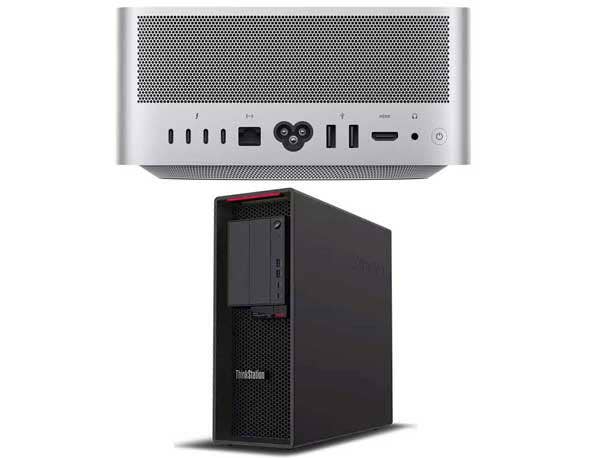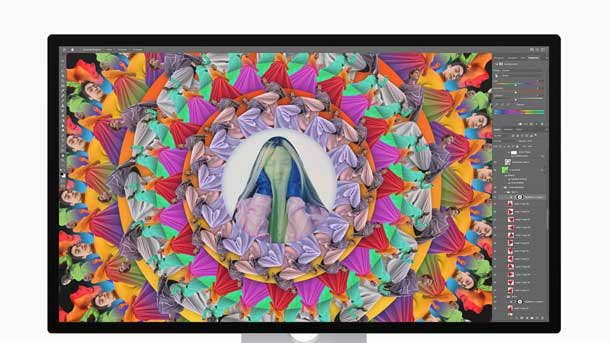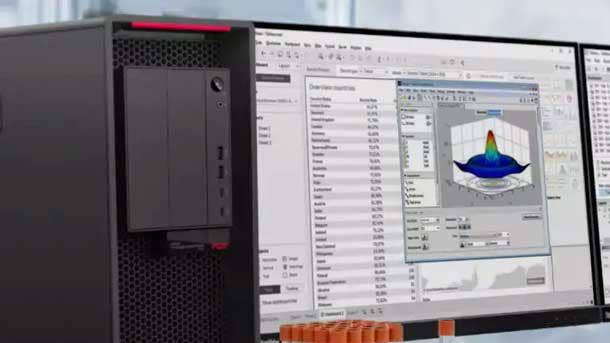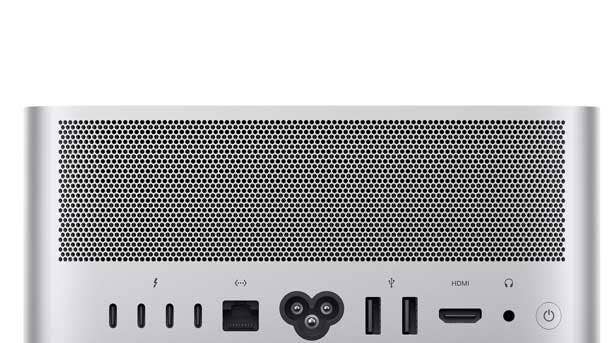Apple Mac Studio M1 Ultra Vs. Lenovo ThinkStation P620: Dream Machine Showdown
Top-of-the-line work powerhouse desktop computers from Apple and Lenovo go head-to-head for a heavyweight computing match pitting Apple’s latest silicon against AMD’s big boss processor, the Ryzen Threadripper.

While we realize that the constant Mac Vs. PC bickering is mostly a dog whistle meant to drum up fiery debates among fandom in each camp, the allure of a scorecard featuring two heavyweight desktop computer brawlers in their prime was too good to ignore.
Apple turned a lot of heads this year with the springtime announcement of its Mac Studio featuring its “system on a chip” M1 Ultra processor. The release was a wild roundhouse punch aimed squarely at top chips from AMD and Intel. AMD’s Threadripper offers blistering speeds needed for the most demanding and graphic-intense work. But Apple came in strong with serious performance in a compact workstation.
Desktop PC giants collide as CRN examines the Mac Studio with M1 Ultra chip vs. the Lenovo ThinkStation P620 featuring AMD’s Threadripper CPU.

Getting Ripped With The P620, While Apple Slices Size
Lenovo’s research and development department must have been seeing stars when they started writing down plans for this monster, which can weigh up to 50 pounds depending on configuration. The simple, no-frills housing on the ThinkStation 620 gives easy access to internals for those who like to do their own upgrades, although we’d like to meet the person who needs more power than even the base configuration wields. Lenovo’s machine is no dainty workstation, coming in at 18.1 inches tall, 6.5 inches wide and 17.3 inches long. But even with a substantial presence, Lenovo keeps things toned down with its all-black simple design.
Of course, Apple’s design approach is austere as well, if not a little slicker in the branding consistency department. Where it really shines, though, is overall size. Apple has somehow managed to squeeze its most monstrously powerful computer yet into a 7.7-inch square footprint at a height of just 3.7 inches. It’s basically just a bit larger than two Mac Minis stacked on top of each other (someone at Apple missed out on a Big Mac cross-promotion opportunity with McDonald’s).
In overall aesthetics and form, we simply must give the nod to Apple here.

Let’s Talk About Specs
Let’s face it: This is more compute power than any of us needs. Even graphics-intense content creators and those doing thread-heavy tasks would have a hard time finding the upper limit on either of these machines. But benchmarks and numbers matter, and both titans came to play.
Lenovo chose to house the groundbreaking AMD Ryzen Threadripper Pro 3945WX processor (which is yet-to-be-bested in a benchmark CPU speed test – not even by Apple’s M1 Ultra). The Threadripper thrashes with up to 4.30 GHz, 12 Cores, 24 threads and 64MB Cache. We’ve outfitted our dream machine with upgraded RAM at 64GB and SSD storage of 1TB to match the base M1 Ultra offering from Apple. Both machines are configurable beyond the $10,000 mark, if you do so desire. You could add up to three graphics cards on the Lenovo, but we thought the Nvidia Quadro P620 2GB was plenty for our purposes.
Apple does love to make things simple and gives you a knock-out base package that includes the M1 Ultra chip with 20-core CPU, 48-core GPU and 32-core Neural Engine, 1TB SSD storage and 64GB unified memory.
As various testers have noted that the M1 Ultra doesn’t quite stack up with the performance of the Threadripper, we’re going to give the slight edge to Lenovo and AMD here, especially considering the giant box leaves you enough room and flexibility to upgrade as you go.

Ports, Pricing And Declaring A Winner
Considering Apple’s tendency to go light in the port department, the Studio gives you some really great options, including two Thunderbold4 ports and one SDXC card slot on the front, and Four Thunderbolt 4 ports, two USB-A ports, one HDMI port, one 10GB Ethernet port, and one 3.5mm headphone jack.
The Lenovo is tricked out with ports galore, including dual USB-C ports and dual USB-A ports on the front. On the back, you’ll find an additional six USB-A ports, four of which support USB 3.2 and two that support USB 2.0. With the AMD chipset, no need for a Thunderbolt port here. You’ll also get PS/2 ports for legacy peripherals, audio/microphone ins and outs, and a 10GB Ethernet port.
If it were a match to determine sheer brute strength, the Lenovo would win handily. But Apple brings finesse and value, providing a worthy entry to their iconic lineup. Then there’s the value proposition: These are expensive machines, considering zero accessories are included. The ThinkStation P620 with this setup will run you $4,924. The base Mac Studio M1 Ultra starts at $3,999 with similar specs.
We give the trophy to Apple for providing a truly remarkable machine in a small package. While still very expensive, Apple also kept this dream machine within reach for the “prosumer” market.